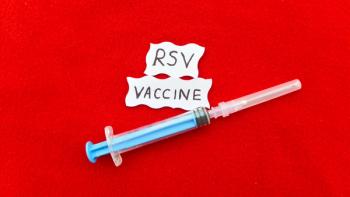
505 (b)(2) Regulatory Pathway for New Drug Approvals
It takes a great deal of time and resources for a manufacturer to complete all the necessary requirements to submit a successful NDA to the FDA for review.
People who are interested in drug development may be aware that New Drug Applications (NDA) and Abbreviated New Drug Applications (ANDA) are 2 of the FDA’s regulatory pathways for how prescription drugs can be approved and ultimately reach the market. In basic terms, NDA’s are for new drugs that have not yet been approved and ANDA’s are for generic products. However, there is an additional pathway that’s a hybrid between the 2 known as 505(b)(2).1
NDA, also called 505 (b)(1), is the format that manufacturers use to bring a formal proposal to the FDA that a new drug should be approved and made available for use by patients in the United States. The NDA includes a great deal of information about the drug being evaluated including the ingredients, how it’s made, pre-clinical (animal model) study results, clinical trial results in humans, what the drug does in the body, and how it will be packaged.2 It takes a great deal of time and resources for a manufacturer to complete all the necessary requirements to submit a successful NDA to the FDA for review.
ANDA is used to gain approval for a generic version of a drug that is already on the market. Earning approval through this pathway involves the manufacturer providing evidence to the FDA that the generic product is comparable to the currently approved product through analytical chemistry and bioequivalence evaluations. The approved indication, dose route, and strength for the generic will be the same as the original (or reference) product. The pathway is abbreviated because preclinical and clinical trials are not required. These studies were performed by the manufacturer of the original product and reviewed by the FDA as part of the approval process, so it would be redundant for the generic manufacturer to complete similar trials again.3 This saves a great deal of time and resources for the manufacturer compared to the NDA.
The 505 (b)(2) pathway provides manufacturers who have certain types of drugs with an opportunity to acquire FDA approval without performing all the work that’s required with an NDA. These drugs are not strictly generics, but are often not entirely novel new molecular entities either. 505 (b)(2) can be an option for drugs with a new aspect related to indication, dosage form or regimen, strength, combination with other products, or other unique traits.1
A key feature of the 505 (b)(2) pathway is that it allows a manufacturer to submit their product for FDA review by including data and/or study results originally collected by another manufacturer or researcher. The manufacturer of the 505 (b)(2) eligible product needs to build a connection between their version of the product, or the active ingredients in it, and the reference product. For example, this could include data and results of bioanalytical testing, pre-clinical studies, or even clinical trial results. If successful in their effort to include supporting evidence from other researchers in their submission, the manufacturer of the 505 (b) (2) candidate won’t have to re-run these studies themselves. While the 505 (b) (2) path allows for using the research of others as a component of their FDA submission, the manufacturer of the 505 (b) (2) product may still need to complete some of their own research in other areas to help fulfill all the various requirements of the FDA to earn approval.4
Another appealing aspect of gaining approval through the 505 (b)(2) is that the approved product is eligible for 3-5 years of market exclusivity. A drug approved via a full NDA is normally granted a 5 year market exclusivity period, while a generic product approved through the ANDA pathway may earn 6 months of market exclusivity if it’s the first generic approved. 5 During the period of market exclusivity the product will be protected from competitors.
505 (b)(2) may represent an appealing pathway for drug approval for manufacturers for certain products. The ability to utilize previously completed research as part of the FDA submission can save a great deal of time and money compared to the traditional full NDA. Additionally, a drug being approved through this pathway is not a simple generic of a previously approved product, so it may reach additional patients or perhaps be an improvement over a currently available treatment. Manufacturers have recognized the potential benefits of 505 (b)(2) with 48 drugs gaining FDA approval through the pathway in 2016, a new yearly high since at least prior to 2004. 6505 (b)(2) is expected to continue to be an important pathway for drug development in the future.
References
1. What is 505 (b)(2)? Camargo Pharmaceutical Services website.
2. New Drug Application (NDA). U.S. Food and Drug Administration website.
3. Abbreviated New Drug Application (ANDA). US FDA website.
4. Gaffney A. “An increasing number of companies are using a once-obscure FDA drug approval pathway.” Regulatory Affairs Professionals Society website.
5. Kumar M, Jethwani H. “The 505 (b)(2) drug development pathway: when and how to take advantage of a unique a unique American regulatory pathway.” Regulatory Affairs Professionals Society website.
6. King J. “On the rise: 2016 505 (b)(2) NDA approvals.” Camargo Pharmaceutical Services website.
Newsletter
Stay informed on drug updates, treatment guidelines, and pharmacy practice trends—subscribe to Pharmacy Times for weekly clinical insights.




















































































































































































































